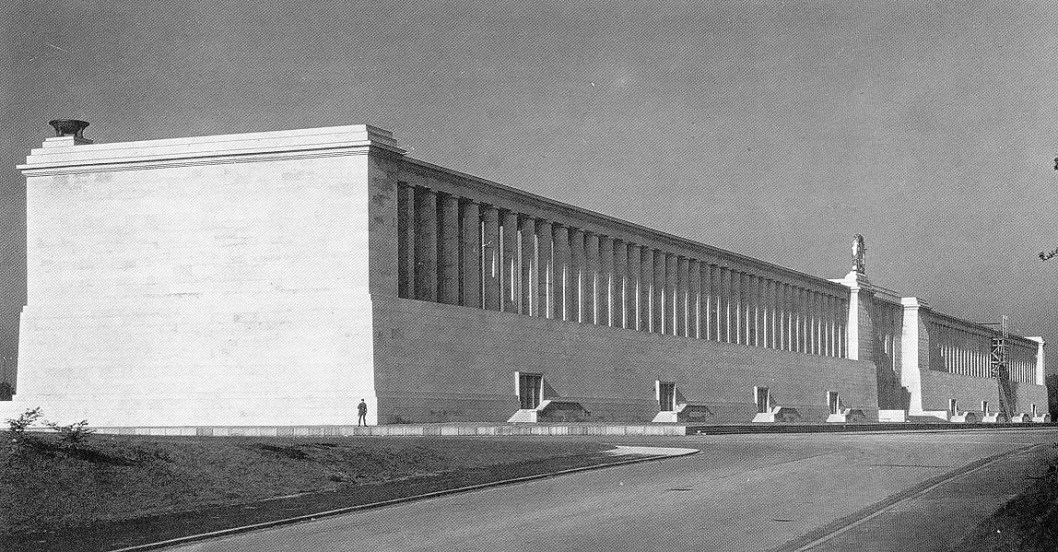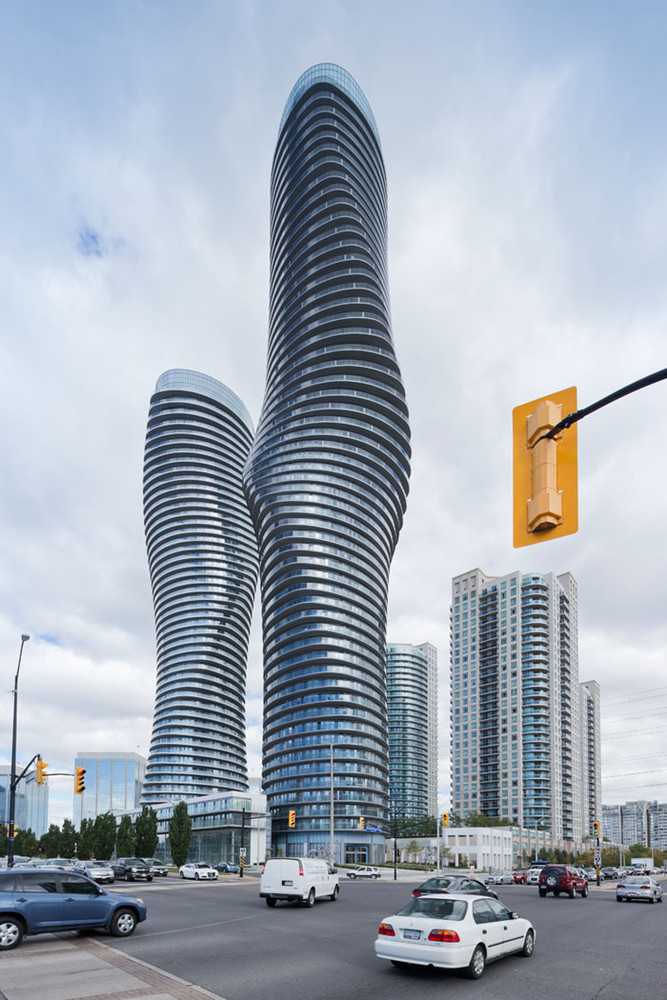War and Design: Towards a Geopolitics of Modern Architecture
A debate is currently ongoing about whether the Marine Corps should be stationed in the building to guard it — this would be seen as a provocation by China.
This is the latest event in a rising conflict between China and the U.S. What kind of conflict are we really seeing? Is it just about about trade, or is it about a broader strategic confrontation between these two countries?
 American Institute in Taiwan 2018 Building. The Wahsington Post
American Institute in Taiwan 2018 Building. The Wahsington Post
To answer this question, let’s look at some events on the U.S side:
- 18 December 2017: Nationaal Security Strategy: For the first time in history, China is named as the primary strategic competitor of the U.S (ahead of Russia)
- 28 Febuary 2018: Taiwan Travel Act: State officials between Taiwan and U.S. can now visit each other - this provokes the Beijing government (because accordning to them, Taiwan is part of China)
- 11 June 2018: AIT building (with potential Marine Corps protection)
- 14 October 2018: U.S navy vessel docks at Kaohsiung (and various other tensions in the South China Sea)
- 25 September 2018: Trump speaks at the United Nations
- 4 October 2018: Mike Pence speech
- 20 October 2018: U.S. to withdraw from missile treaty
Trump at the United Nations:
Not long ago, Venezuela was one of the richest countries on Earth. Today, socialism has bankrupted the oil-rich nation and driven its people into abject poverty. Virtually everywhere socialism or communism has been tried, it has produced suffering, corruption, and decay. Socialism’s thirst for power leads to expansion, incursion, and oppression. All nations of the world should resist socialism and the misery that it brings to everyone.
Pence
China’s aggression was on display this week, when a Chinese naval vessel came within 45 yards of the USS Decatur […] We will not be intimidated and we will not stand down. […] America will always believe that Taiwan’s embrace of democracy shows a better path for all the Chinese people. (Applause.) Now these are only a few of the ways that China has sought to advance its strategic interests across the world, with growing intensity and sophistication. Yet previous administrations all but ignored China’s actions. And in many cases, they abetted them. But those days are over.
This tells us that a broader strategic confrontation between this countries is happening. This compels us to study the history of the Cold War and other wars and how war forms impact society, culture, design and architecture.
A new approach to architectural history
The nation has always been the key category of architectural history — We read about the architecture of Japan, American Architecture etc. Can we develop a borderless & networked trans-cultural, trans-naotinal map of modern architecture?
THis lecture attempts a geopolitical mapping of modern architecture of a cluster of states in East Asia.
Cartographic/Geographic THinking
- Immanuel Wallerstein: World-System. unequal world, core/periphery. The whole world is a society that is unequal.
- Michel Foucault: Institution as spatial & geo-political subject. He’s looking at geopolitical power structures on a micro-scale (ie. in prisons)
- Gilles Deleuze: multiplicity, difference, distribution, de-territorializing.
War Types/Forms
-
Jean Baudrillard: The Gulf War did Not Take Place (1991). Because the gulf war was so high-tech, the was very little ground force confrontation: A new form of war emerges. Baudrillard calls this a media-war. The camera and te gun become the same thing.
-
Eyle Weizman: Hollow Land: Israle’s architecture of occupation (2007), Forensic Architecture: Violence on the threshold of detectability (2017). This is often about urban warfare — how does war play within urban architectural fabric?
War Types/Forms
- Paul Virillio: Pure War (1983) on the Cold War: Classical war between two symmetrical, clearly defined dualistic parties. The primary threat is nuclear attack. Mutually assured destruction. Info War on urban war (1997). Terrorist attacks desgined for the evening news. Impure War on terrosist forms of war (2007). There are no dualistic parties, asymetrical, small-yet global. Pure War: Twenty-Five Years Later (2007)
Paul Hirst (2005) offers a comprehensive study of war: Space and Power: Politics, War and Architecture. Talks about the shifting forms of war: Empirial (land) war, Indusrtial Wars (WW1, WW2), Cold War (nuclear bomb threat), Post-Cold war: Securitisation of urban space.
War and Aesthetics
- Lebbeus Woods (1993): War and Architecture. He starts to talks about the connection between war and design/achitecture.
- Paul Virillio (1975): Buner Archeology. A exhibition of photographs of desterted bunkers and destered defensive works after the second World War.
Bunkers are so appealing […] I was most impressed by a feeling of being .. rished. The immensity of the project is what defies common sense. Total war was revealed here in its mythical dimension […]these concrete blocks were in fact the final throw-offs […] The casemate […] was scandalous here, and its modern-ness was due to […] its siluhette. The curved profile brought with it into the harbor’s quarters a trace of the curves of dunes and nearby hills, and thre, in this natural-ness was the scandal of the bunker.
Goes on to say about Albert Speer:
His passion for architeture and for politics are one and the same.
Albert Speer is a key case here. He is the head of the “Chief Office for Construction” from 1934 to 1939, Chief Wartime Architect 1939-1942, Minister of Arms and war production 1942-1945. His role shifts from architecture to wartime organisation.
 Nuremberg Stadium (1930). Source
Nuremberg Stadium (1930). Source
Also: Reichskanzlei, New Berlin. Also military architecture: Atlantic Wall, underground works, bunkers
He combines in one person the production of war machinery, defensive works and architecture. Speer buidls these neoclassical works, but also “functional” anti-aircaft towers and bunkers.
Geopolitics of modern architecture of a cluster of states in East Asia
Spacial Lines
- Pre-1945: Primary story is Japan attacking China. This leads to a whole “middle region” consisting of Manchura, Korea and Taiwan between CHina and Japan.
- Post-1945: There are four main frontiers (all communist v capitalist)
- Korea, North v South
- Taiwan Strait, Peoples Republic of CHina v Republic of China (ie Taiwan)
- Mainland CHina v Hong Kong
- North Vietnam v South Vietnam
Rears
- Third LIne Construction. China is exposed on the East (to the U.S) and to the North (by Russia) so they constructed the “third line” in th ecore of China. It’s a strategic rear.
- Chengdu-Munming Railway (58-64)
- Penzhihua City (65-74)
- Xichang Satellite Launch Centre (1970-1984). Still engaged in lunar missions today
This coincides with danwei urban planning & functionalist architecture. A lot of the urban planning from this era is very functiona;
Aesthetics
- *Pre-1945: (Recall the main timeline is Japan colonising china). Either traditional japanase, Japanese-MOdern, or western-modern (classical) architecture. IMperial Crown Style
- Prefecture Office (Manegawa 28), Military Hall (tokyo 34), Imperial Museum (tokyo 37), State council (hsinking 36)
- Western classical style (recall Speer)
- Post-1945: (recall seperation between communist, capitalist). The communist countries embrace classical nationalist architecture, while the capitalist countries embrace modernism. [Central square building in pjonjang] classical composition, but asian roofs. Similar buildings from the 1950s in Beijing. Classical composition with a chinese roof. Stalinist architecture in russia: Classical architecture mized with russian features.
In the captialist countries
- South Korea: Kim-Soo-geun
- Freedom Centre +Tower (1963)
- Olympic Stadium (1977)
- A mixture or Corbusian aesthetics and Asian elements.
- China: Wand Da-Hong
- Residence (1953)
- Sun Yat-Sen Memorial Hll (1972)
- I M Pei, Chen Chi-Kwan, Chang Chao-Kang: Tunghai University (53-63). All of these people studied at Harvard (under Gropius)
- Japan: Kenso Tange, Le Corbusier
- A mixture of crown imperial style and modernism. Also Corbusier in Tokyo. Japanese elements like horozontality adnd exposed structure
In the 70s, the distinction between captialist and and communist countries becomes complicated. National style happens in Taiwan, hile China adopt modernism
 Baiyun Hotel, Guangzhou, 1976. Architect: Mo Bozhi. Source
Baiyun Hotel, Guangzhou, 1976. Architect: Mo Bozhi. Source
Modernism happens in Beijing:
- International Club (1972), Diplomatic Apartments (1972)
- Mo Bozhi: Baiyun Hotes (1976)
Third World Theory (aid) projects:
- Conference hall in Colombo, Sri Lanka (1973)
This chinese modernism is a mixture between communist functionalism and western id-centru modernism
Railway stations built by communist china in africa
After the cold war:
IM Pei (1982): Fragant hill hotel Beijning This is vernacular, post-modernist architecture. Here nationalist symbols start to be deconstructed.
Today
A building in shanghai that the U.S thinks is a base if cyber attacks against the US, Unit 61398.
At the same time, Chinese architects are building in the West: Paris, Canada:
 Absolute Towers by MAD Architects. ArchDaily
Absolute Towers by MAD Architects. ArchDaily
There is cultural exchange happening at the same time as confrontation.
Toward a critical pragmatism: Contemporary architecture in China in Harvard At the same time: Military tensions in the south china sea
Indeterminate signals, war in quotation mars: trade, cyber, military posturing.
Conclusions
What we’ve attempted is a geopolitical, historical mapping of architecture in this cluster of countries in South Asia. We observe:
- A shift in focus from Japan to China
- A middle zone exists between manchuria, korea, taiwan
- Changing war forms
- Second world war. industrial, ideological/classical (speer, Clausewitz)
- Cold war (deterrent). War as peace. Ideological dualistic between east/west
- multi-form war, info-war. Mixed, indeterminate, comprehensive. There’s not just military confrontation, but also informational, economic strikes.
Writers on today’s war forms and implications on architecture and society: Baudrillard, Virillio, Sun-Tzu
